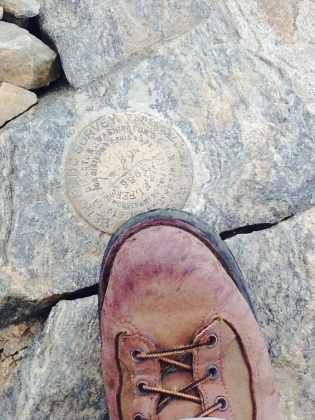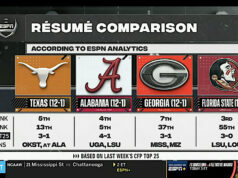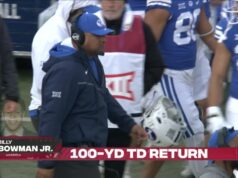
We’re a nation of conquerors. It’s built into our DNA. “Vini, Vidi, Vici” (“I came; I saw; I conquered”) was first uttered by a Roman in 46 B.C., but an American is more apt to think of Ghostbuster Peter Venkman’s own twist on the phrase — “We came, we saw, we kicked its ass” — rather than Julius Caesar’s original Latin expression. This shows how we, as a nation, even conquer quotes about conquering.
It’s with this urge to conquer that I set off to Colorado this summer. I wanted to set foot on the tallest mountain peak I could and announce my superiority. I wanted to conquer nature. I wanted to conquer other hikers. I just wanted to CONQUER something.
At 14,440 feet, Mt. Elbert looms over the Rocky Mountains, all of Colorado, and everything in the lower 48 states outside of California’s Mt. Whitney (14,505 feet). Scaling Mt. Elbert, however, isn’t a technical chore: Three trails approach the summit with little having to be traversed off trail. Nothing to the summit is rated higher than Class 2 in the Yosemite Decimal System (defined as “simple scrambling with the possibility of occasional use of the hands.”)
On the other hand, nothing is particularly “simple” in altitudes of five digits for someone who lives in Norman, Okla., elevation 1,171 feet. Air at 10,000 feet is only 50 percent as thick as that found at sea level, and we were aiming for nearly a mile higher. Plus, at age 41, all athletic endeavors feel approximately 50 percent more difficult than they were 20 years ago.
Still, my best friend, Dale Moody, and I set off in August to summit Mt. Elbert. We also chose to do it via the most difficult route — Black Cloud Trail — one that is usually ignored by most hikers for being too long and too steep. However, it fit perfectly into our plans as we embraced the solitude away from other summit seekers found along easier trails.
The hike was as we expected: very steep and very long. We camped two hours up the trail, at about 11,500 feet, to get a head start on the summit bid the following morning. Still, from our campsite, it took four full hours to reach the summit. Some of it was simple walking over relatively flat terrain. Some of it involved crawling on all fours up a hillside so steep one couldn’t stand upright without tipping over. Much of it was done on a ridge at a dizzying altitude above 13,500 feet. The final third-mile jaunt to the peak was over boulders the size of an office desk with a 1,000-foot drop inches away on either side.
In our final stretch, I began suffering a bit from the altitude: I was lightheaded and dizzy. I made things worse by panicking a bit and obsessing on my altitude-related problems. I was hyperventilating. I was bruised. My knees ached. My feet were blistered. I was tired. I was thirsty (both Dale and I had shortsightedly taken too little water – I was down to my last six ounces at this point). I was ready to quit. I sat down and announced my intention to turn around.
Dale calmed me down and asked me to think about it. I did. I soon realized there was nothing more I’d rather do than CONTINUE. At that moment, I grasped that I was not competing on a football field against 11 players from another town. I wasn’t facing off with five opponents from another school in basketball, and I wasn’t mano a mano with a dead-eye marksman in horseshoes.
I was fighting with myself, against myself, and I was determined to win. It was a feeling I had experienced before but not with such intense desire. I sprung up and pushed on toward the peak. Once I crested the top, tears were in my eyes, as I realized I had won. I had taken myself to my furthest physical and mental limit, and I pushed past.
Jim Whittaker, the first American to reach the summit of Mt. Everest, once said, “You don’t really conquer a mountain. You conquer yourself. You overcome sickness and everything else — your pains, aches, fears — to reach the summit.”
I find his quote to be true.
I hiked 14,440 feet above sea level to see what I could conquer … and it turned out to be myself.



























